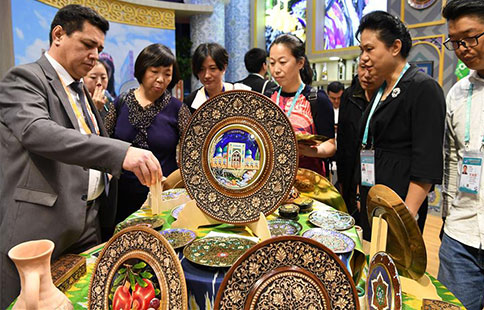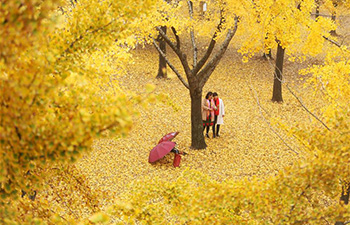by Olatunji Saliu
ABUJA, Nov. 8 (Xinhua) -- Nigeria is set to resume the export of hibiscus, a genus of flowering plants in the Malvaceae family, or mallow, and one of the most beautiful flower plants in the world.
The country is one of the world's major producers of hibiscus. The export was reportedly suspended following the detection of storage pest in some consignments.
In a couple of weeks, Nigeria will resume shipments of the dried hibiscus flower, taking advantage of the opportunity to earn foreign exchange and strengthen the diversification of the economy.
Local officials said the harvest season of hibiscus will start "any moment from now."
"Our farmers are eager and the fields are near ready," said Vincent Isegbe, coordinating director of the Nigeria Agricultural Quarantine Service (NAQS).
"And the good news is that Nigeria has a vast growing belt, with harvest available all year round," Isegbe told reporters in Abuja.
The Nigerian hibiscus, unique in nature, can grow up to 15 feet high and 6 feet wide. It is mostly sourced from six states in the northern region of the country, including Kano, Katsina, Bauchi, Gombe, Borno, and Jigawa.
The country suspended the exportation of dried hibiscus last year, following the detection of storage pest in some consignments from Nigeria.
Isegbe said the right measures have been taken by stakeholders across the value chain to solve the issue. "That is why we are resuming the export of the plant again," he added.
Mexico is the largest importer of Nigerian hibiscus.
The hibiscus, traded as dried shifting and dried flower, also has export markets in Holland, Germany, the United States of America, other parts of Europe and Asia.
Last year, before the exportation was suspended, Nigeria had shipped 1,983 containers of hibiscus to Mexico alone and earned 35 million U.S. dollars within nine months.
Nigerian authorities said more local farmers have shown the commitment to grow the plant in order to increase their income.
Harvest in hibiscus flower depends on the variety. Once fully bloom, flowers can be handpicked. The yield of hibiscus flower depends on many factors like manuring, watering, and other disease prevention measures.
The peak production of a hibiscus plant in Nigeria is during the dry season of November to April of the following year. However, the plant grows throughout the year.
Having resolved to resume exportation of dried hibiscus, local agronomist Chika Okeke said Nigeria needs to focus not just on production, but on quality control and standards -- which are the main challenges of the sector in the country.
According to Okeke, the maintenance of a good storage facility should be a prerequisite as it enhances good quality control. Also, the products must be free of foreign matters or objects such as papers, nylon, stone, specks of dirt, and so on, he said.
The extract from hibiscus flowers and leaves have many uses and benefits, either medically or in industrial production.
Medical experts said dried hibiscus flowers, usually used to prepare hibiscus tea -- or called "zobo" in local parlance -- aids detoxification.
"It also helps in controlling cholesterol level, darkens hair color and slows aging and anti-aging properties," said Mutiu Adegbite, a medical doctor.













